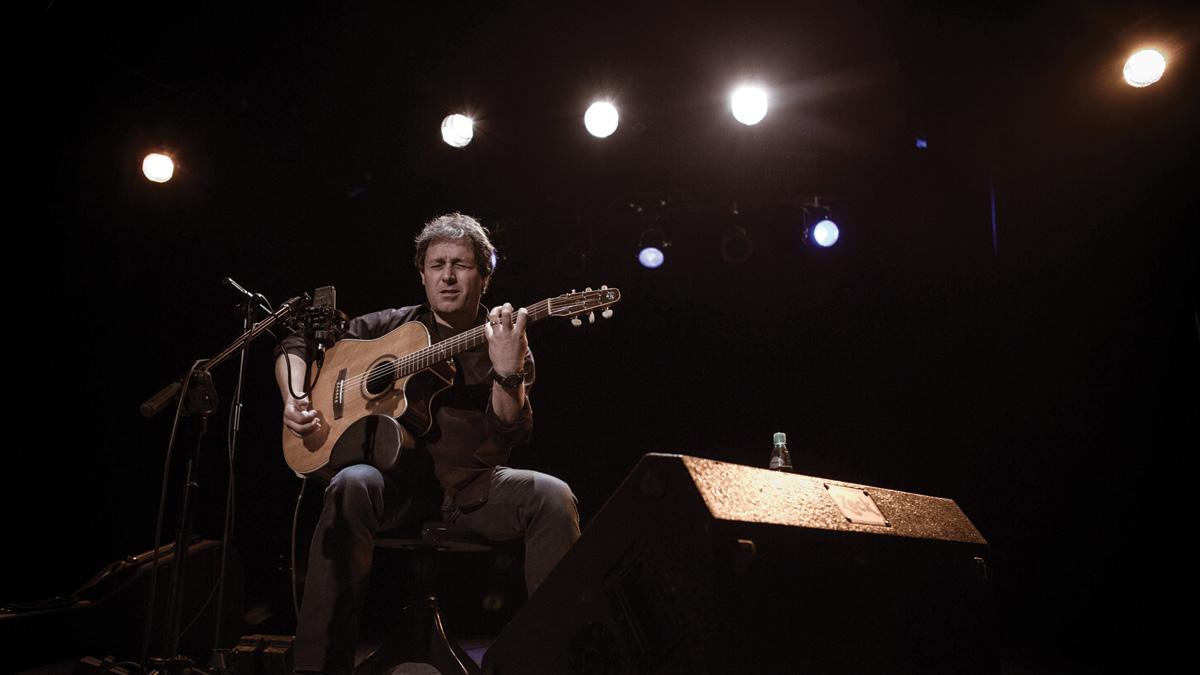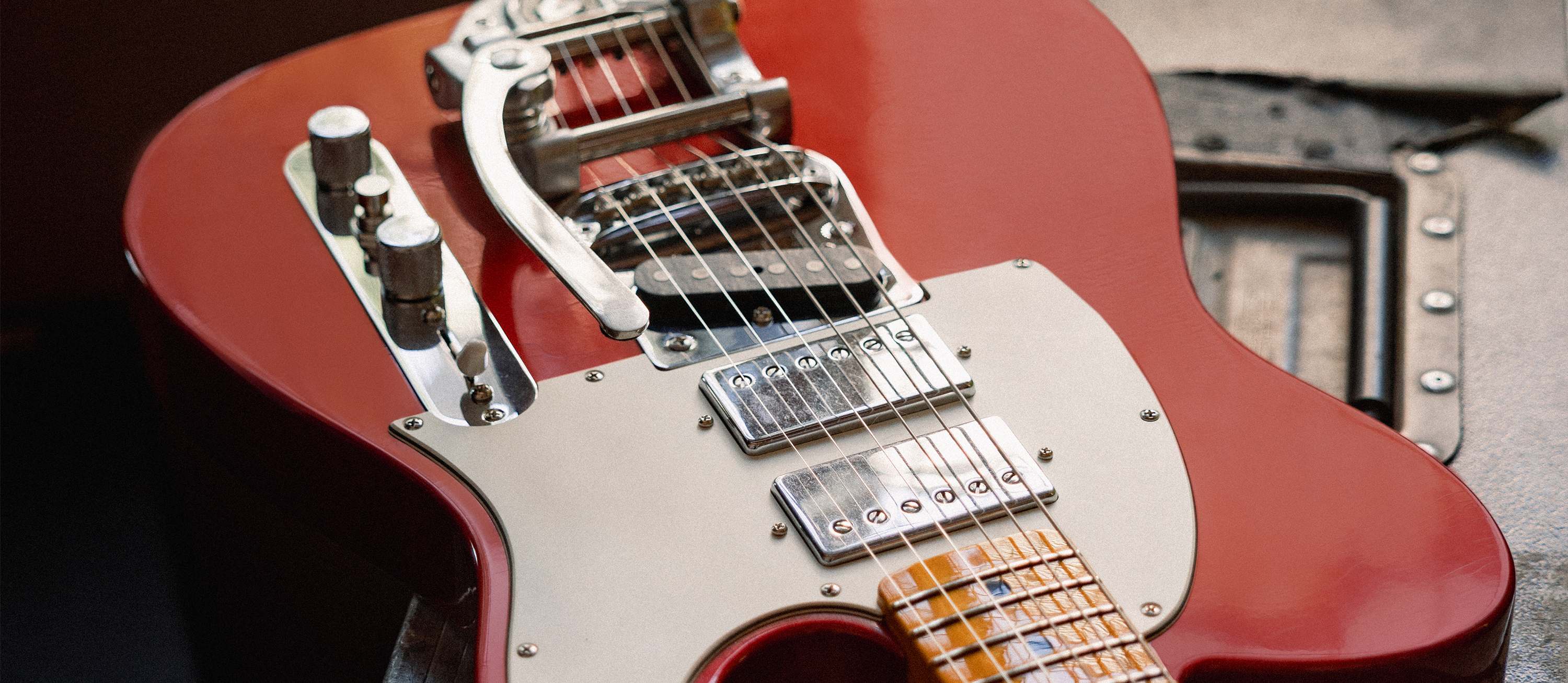Fingerstyle Maestro Peppino D’Agostino on How Open Tunings and a Sense of Curiosity Help Him Master Many Styles
D’Agostino is an acoustic player of phenomenal technique, but to him the composition always comes first.

It’s interesting how similar yet different the worlds of nylon-string and steel-string players can be. After all, it’s the same acoustic guitar universe. Many guitarists play both instruments, and it’s always a great idea for players of all stripes to have a nylon-string guitar in their arsenal.
One acoustic champion who continues to bridge not only the two instruments but also their respective cultures is Peppino D’Agostino. Many Americana players have admiration for and draw inspiration from European classical maestros, but the Italian-born transplant to California is a rare breed: a steel-string dreadnought player respected by, and comfortable playing with, virtuosos from the global nylon-string community.
D’Agostino has won numerous honors, including Best Acoustic Guitarist in the 2007 Guitar Player Reader’s Poll, and was included in our August 2017 acoustic special issue, which featured 50 of the best acoustic guitar players of all time. D’Agostino has just released Connexion (A-Train Entertainment), his first studio album in more than half a decade.
It contains 10 tunes that feature an array of elements from myriad styles. According to the liner notes, the title refers to “An instrumentality that connects. The process of bringing ideas or events together in memory or imagination.”
My fingerstyle technique reflects my curiosity for all kinds of styles, from Jerry Reed to Brazilian guitarists Baden Powell and Luiz Bonfá, to traditional Italian music and flamenco
“High Plains Guitarra,” the album’s opening track, is an homage to Paco de Lucia and Ennio Morricone, and conjures images of a classic Italian spaghetti western while incorporating bolero-style flamenco flourishes.
Adept at sounding like two or more players at once, D’Agostino uses an inventive open tuning to make “Dancing With Shadows” sound like music for an Italian ballroom scene from the 1940s.
With the exception of “Mary’s Sleeping Song” and “Stammi Vicino,” both of which feature electric guitar courtesy of Stef Burns, Connexion is a document of D’Agostino’s technical ability and compositional prowess in the solo acoustic arena.
How did you become known as the missing link between nylon-string classical and steel-string acoustic guitar?
I’ve always loved the classical guitar, even though I never studied it formally. I just learned to play certain pieces on steel strings. I appreciate the timbre of the classical guitar and the precision of classical players. Also, the harmonic content of classical composers is more in tune to my taste than most steel-string acoustic guitar compositions.
Since 1998, I’ve been collaborating with David Tanenbaum, who is the chair of classical guitar at the San Francisco Conservatory of Music. We were invited to play together at a festival in Germany, and we came up with a repertoire ranging from Bach to original compositions.
We eventually ended up making a record together called Classic/Steel. David also introduced me to many of the top players in the world, and I became good friends with some of them, especially Sérgio Assad.
How does your fingerpicking technique reflect the merging of different styles from various players?
My fingerstyle technique reflects my curiosity for all kinds of styles, from Jerry Reed to Brazilian guitarists Baden Powell and Luiz Bonfá, to traditional Italian music and flamenco.
I’m not an expert at any of them, because I consider myself more a composer than an arranger of other styles, but all those influences are in my music. The reality is that there is no such thing as the perfect technique, although I have to say that flamenco players are technically astonishing.
Can you describe the triplet flamenco flourish you apply to the main theme of your new album’s opening track, “High Plains Guitarra”?
It’s my version of the flamenco rasgueado. Flamenco players use their first three fingers, whereas I use only the first two, alternating between index and middle fingers. To achieve a triplet, I start by striking downward with the nail of the index finger.
The next motion is upward, toward the ceiling, with the flesh of the middle finger raking across the strings. The third strike is again the index, but this time upward, with the flesh of the finger rather than the nail.
How are you handling the fingerstylists’ issue du jour: What to do about maintaining fake nails?
I’m having a crisis right now because all of the nail salons around where I live in the San Francisco Bay Area are closed due to Covid-19. I ordered a kit off of Amazon and tried to apply them myself, but that only made things worse, and I had to use acetone to remove the mess I made.
My fingernails are hurting and I have a livestream benefit concert coming up very soon. I’m going to try using a new kit I ordered from Guitar Player Nails. To me, having acrylic nails or something that works nearly as well is absolutely essential.

Can you reveal the inspiration and compositional details behind “High Plains Guitarra”?
I wanted to create the impression of two instruments. I was thinking of the film soundtracks created by the great soundtrack composer Ennio Morricone, who often used a trumpet to play the theme. In my head, I imagined a wind instrument.
One of the limitations acoustic guitarists are always dealing with is sustain, and using open tunings helps in that sense because open strings ring out longer. The tuning I used on “High Plains Guitarra,” from the treble strings to the bass strings, goes E A E D A D.
I play the melody on the treble strings and the harmony in the bass. I have to be very careful to play everything very cleanly in order for all the notes to sustain clearly, which can be difficult because sometimes the rasgueado we discussed previously must be executed in the middle of the melody.
The reality is that there is no such thing as the perfect technique, although I have to say that flamenco players are technically astonishing
Can you share some insights on “Dancing With Shadows”?
It’s in an unusual tuning that, from bass to treble strings, goes F A C E G C. So there is essentially an F chord on the bottom three strings and a C chord on the top three. The time signature is 12/8, and I play the bass softly underneath while giving more power and resonance to the melody on top.
I was thinking of “Sleep Walk” by Santo & Johnny. That melody is played on lap steel using a slide, and I wanted to create the same feeling in the melody on the acoustic by bending the strings.
The tricky part is bending the second string downward rather than upward, so as not to interfere with the bass note vibrating on the open third string, E. I also use my pinkie for string bends, which requires practice to develop enough strength in that little finger.
What aspects of your signature Seagull dreadnought cutaway come into play in such a situation?
It has a wide fingerboard, measuring 1.9 inches at the nut, that provides ample space, and having a short scale length of 24.9 inches makes some of the finger stretches and string bending easier. I also use a rather light set of strings, Dunlop 80/20 Bronze, gauges .011 to .052.
What pickup are you using in the Seagull these days?
The new revised edition of my signature Seagull includes an L.R. Baggs Anthem pickup and microphone system.
I use the Line 6 Relay G50 digital wireless system to run my signal through a few MXR pedals: a Dyna Comp Deluxe Compressor, two reverb pedals set on different presets, a Six Band EQ and a Clone Looper.
I usually go direct to the house, but sometimes I’ll use the phenomenal Baggs Synapse Personal P.A. for playing a house concert, or as a monitor in a bigger venue.
You have some Italian tour dates on your schedule over the summer. How are things shaping up over there?
Although Italy is starting to open up, I’m not sure if I will go, because of the quarantine procedure, and I’m not convinced that everything is actually ready to roll.
Some dates have been postponed until next year, including one of the things I do that I’m most excited about: Music World Retreats, which are music camps that feature some of the best players in the world and draw people from around the globe. I participate in the U.S. and Italy.
The Sicily Guitar Retreat has been rescheduled for next June. Hopefully we’ll be able to start doing American dates again either in the fall or in 2021. We’re planning to add ukulele instructor James Hill, and he’s pretty amazing. Everything is up in the air right now.
Get The Pick Newsletter
All the latest guitar news, interviews, lessons, reviews, deals and more, direct to your inbox!
Jimmy Leslie has been Frets editor since 2016. See many Guitar Player- and Frets-related videos on his YouTube channel, and learn about his acoustic/electric rock group at spirithustler.com.
“He used to send me to my room to practice my vibrato.” His father is the late Irish blues guitar great Gary Moore. But Jack Moore is cutting his own path with a Les Paul in his hands
"Why can't we have more Django Reinhardts going, 'F*** everybody. I'll turn up when I feel like turning up'?" Happy birthday to Ritchie Blackmore. The guitar legend looks back on his career in an interview from our December 1996 issue










